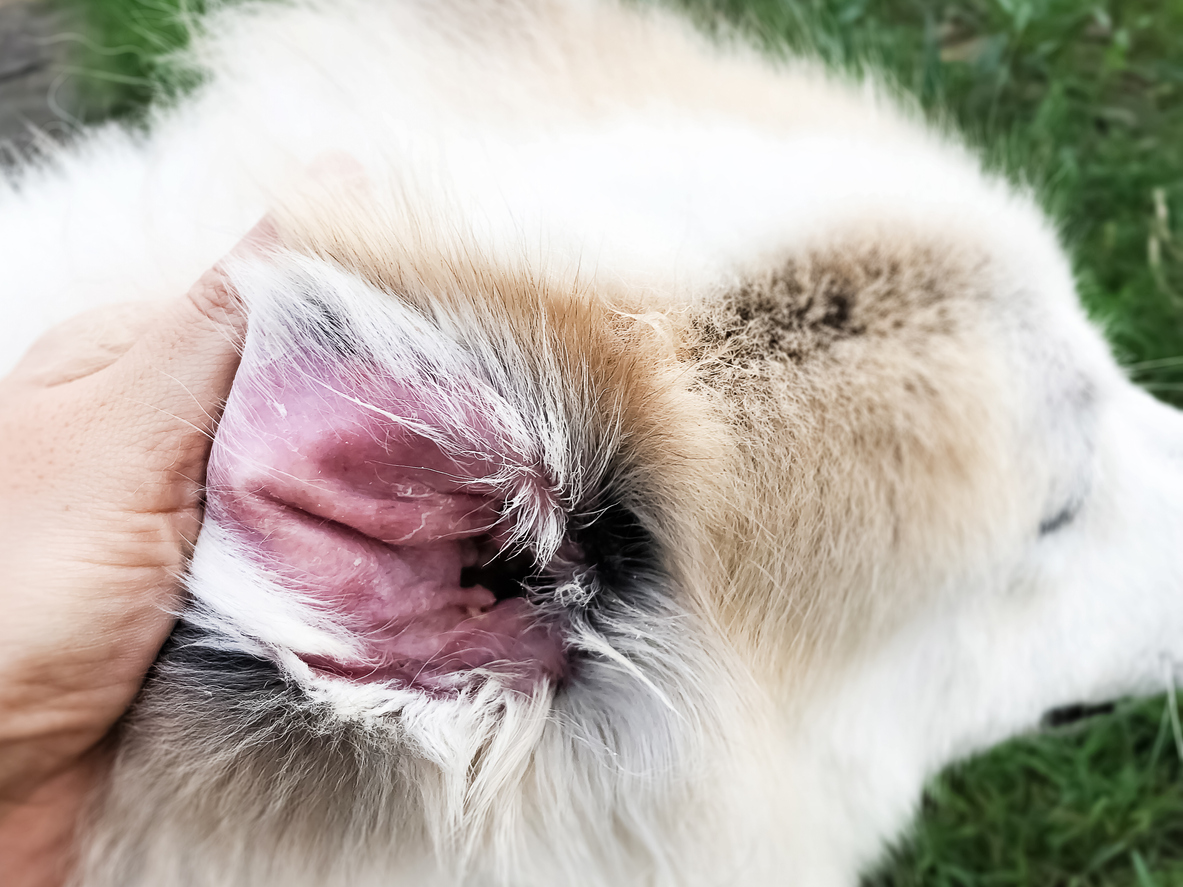The allergy can be to food, or to environmental allergens such as pollen, grass or dust. Yeast infection in dogs is also called yeast dermatitis.
Malassezia (Yeast) Dermatitis The Skin Vet
Ear infections caused by yeast may also be treated with ointment and oral medication.

Systemic yeast infections in dogs. Systemic yeast infection in dogs means that there is an issue or imbalance in your dog’s body that causes the yeast to overgrow. Yeast infection treatment is usually topical, such as medicated shampoos. Chronic or recurrent ear infections;
The infection causes widespread inflammation and itching of the skin and ears. But, yeast and allergies are not the same things, although your dog could be allergic to yeast. Symptoms of yeast infection in dogs include:
Pyoderma is the most common bacterial skin infection in dogs. Yeast infections can cause red, irritated, or itchy skin or ears, and there is often a sweet or musty odor. In severe cases, a systemic oral medication is chosen.
Pyoderma in dogs is differentiated based on the tissues of the skin involved in the disease. According to natural dog health remedies, yeast infections in dogs are caused by an organism known as candida albicans, which is both a yeast and a fungus. Canine yeast infections are commonly seen in skin folds, axillary (armpit) and inguinal regions, and ears of infected dogs.
It normally lives in your dog’s anal sacs, ears and rectum, but it can also become opportunistic and spread beyond these areas. Prevention may be the best medicine, and in most cases, yeast infections can be prevented. This condition starts in the digestive system and is caused by a ph imbalance.
In this case, there are usually additional symptoms present in addition to the yeast infections in dogs ear. Your dog’s systemic yeast infection is caused by a simple organism called candida albicans. Causes of a systemic canine yeast infection can include:
Candida infection can occur in one specific part of the body (localized), or it can spread throughout the entire body (systemic). A number of things can lead to a lowered immune system, including: A yeast infection in dogs causes lots of discomfort with itching and scratching being the main symptom.
This condition starts in the digestive system and is caused by a ph imbalance. A systemic yeast infections in dogs, is a condition that occurs when yeast builds up in a dog’s body. Yeast infection is a skin condition caused by an overgrowth of yeasts.
Symptoms of a systemic canine yeast infection This skin condition typically hits dogs living in hot and humid environments, where yeasts tend to thrive. Yeast overgrowth occurs when the immune system is compromised.
The most common symptoms of the yeast are ear canal infections and paw licking. Chronic yeast infections can cause the skin to become thickened and discolored (gray, brown, or black). Under normal conditions, this yeast is present in your dog’s digestive system and does not cause any problems, but if certain other factors come into play, your dog can become ill.
What are the symptoms of yeast infections in dogs? Infection results in redness of the skin with hyperkeratosis or thickening, and hyperpigmentation. Yeast infections in dogs are a secondary problem, meaning an underlying condition has led to yeast overgrowth.
For example, if the infection is in the ear, antifungal creams or drops and a special cleaning routine are usually prescribed. Additionally, secondary bacterial or yeast infections often develop between the toes, causing the itching and licking to worsen, so evaluation by a veterinarian for miscroscopic analysis of the inflamed feet is needed to evaluate if antibiotics are needed. Treatment of yeast infection in dogs will vary depending on the body area affected.
These infections thrive in moist and humid environments on the body. Generalized skin yeast infections tend to be itchy and infected dogs will scratch excessively. Underlying diseases that weaken the dog’s immune system;
Yeast overgrowth leads to ear infections, skin irritation and rashes, digestive upset and secondary medical problems like staphylococcus (staph) dermatitis, gas and bloating. Scales and crusty, flaky skin; Clinical signs vary but your dog may be uncomfortable — signs include licking, chewing, scratching, and a ‘yeasty’ odor.
Candidiasis is an underlying cause of many skin and coat problems, allergies, fungal infections, dog ear infections, digestive problems, food sensitivities, and other symptoms in our canine companions. Instead, it is the result of a breakdown of the natural environment of the gi tract (gut), which results in a very troublesome imbalance. Thickened and/or darkly pigmented skin;
This type of environment encourages the yeast to grow and reproduce at a faster rate until it overwhelms. Yeast dermatitis or malassezia dermatitis affects paws — this is common in dogs and can affect the lip margins, ears, armpits, groin, the underside of the neck, and skin in between the toes. Although yeast infections are rarely fatal, treatment is necessary to ensure your dog is returned to full health.
Underlying skin disease, mainly atopic dermatitis or flea allergy dermatitis. Yeast is more prevalent in the summertime as it thrives in hot and humid weather and often gets mistaken for allergies. Systemic yeast infections can cause your dog to itch all over.
Systemic yeast infection in dogs. During this imbalance harmful yeast that is normally present multiplies rapidly and systemically invades the body. During this imbalance harmful yeast that is normally present multiplies rapidly and systemically invades the body.
Yeast infections (candida albicans) in dogs are fairly common. Either types of infection can cause extreme discomfort. Yeast infections can happen anywhere in your dog's body.
A systemic yeast infections in dogs, is a condition that occurs when yeast builds up in a dog’s body. In the gut, naturally, there are billions of beneficial bacterial flora colonies, and fungal residents as well such as candida yeast. It can result in inflammatory skin conditions in your dog’s skin folds between their paw pads, ears, or genital area.
